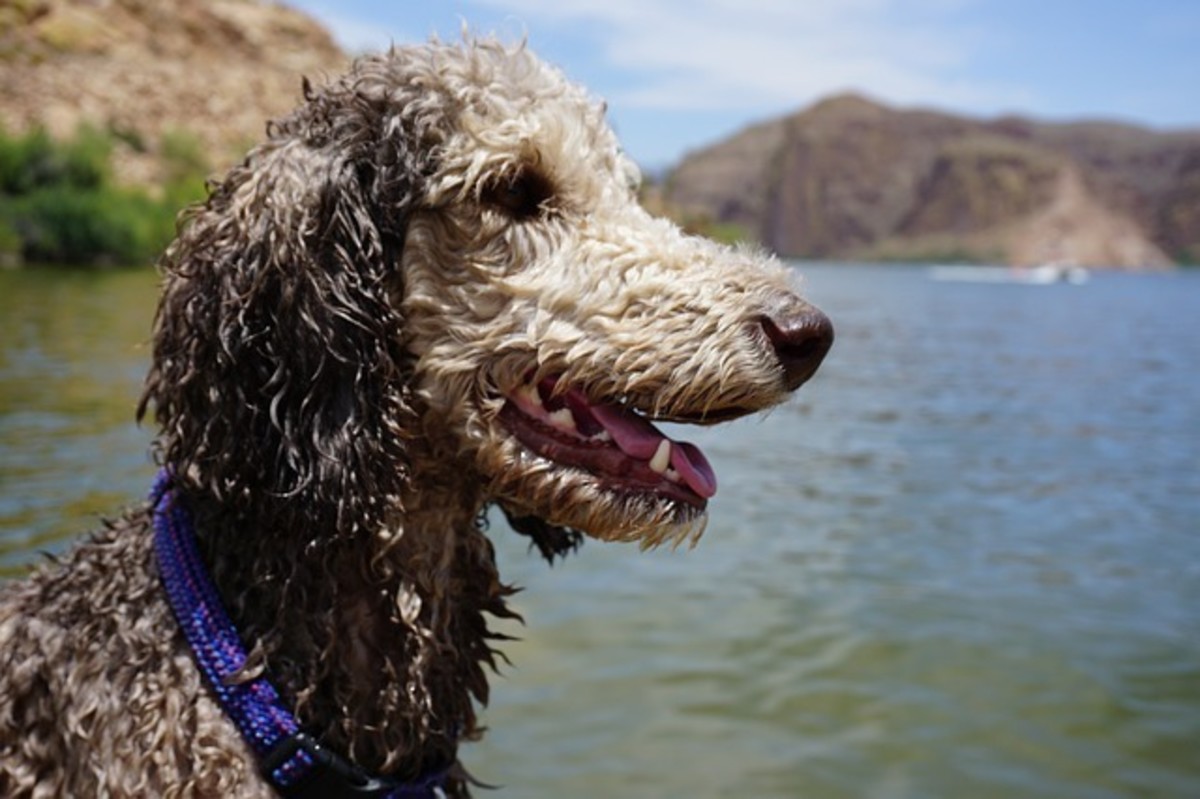
The resulting litter was then crossed with Irish Setter, light-colored Bloodhound, Newfoundland and Wavy-Coated Retriever. It is believed that Goldens were developed by crossing a yellow colored retriever with the now extinct Tweed Water Spaniel. The Golden Retriever originated in in Scotland in the mid-1800s when the need arose for dogs that were more effective at retrieving game, especially from water. Like the GSP, this breed has webbed feet and a muscular body, which make them skilled swimmers. In addition, the long beard and eyebrows help protect the GWP's eyes and face. Breeders focused on developing a thick, water-resistant coat so the dogs would more comfortable when retrieving in water. The German Wirehaired Pointer (GWP) is a close relative the German Shorthaired Pointer (GSP) but was bred to be more rugged. Most GSPs love water but not in lower temperatures, as they easily become cold thanks to their short fur. Their webbed feet, muscular build and water-repellant coat allow them to excel at swimming. The German Shorthaired Pointer (GSP) was bred to hunt, point and retrieve game both on land and in water. The breed is characterized by a beautiful straight, long coat that also protects it from cold water and weather. It is believed that the Flat-Coated Retriever is a mix of Newfoundlands, Setters, Sheepdogs and Water Spaniels.

Because of this, the breed tends to love to retrieve toys from water (bonus: using squeaky toys will resemble the prey they used to retrieve). The Flat-Coated Retriever was bred to be a dual-purpose retriever, meaning they retrieve game both on land and from water. They have longer fur called feathering, likely for insulation, around the ears, neck, chest, back of the front legs, stomach, back legs and tail. Because they were bred to take well to water, combined with their energy and athleticism, English Setters tend to enjoy swimming. Their body has a short to medium long, silky coat that lies flat. Evidence shows that the English Setter is crossed with Spanish Pointer, English Springer Spaniel and large Water Spaniel. It was bred to retrieve game on both land and water. The English Setter is one of the oldest hunting dog breeds, dating back to the 14th century. They are eager swimmers that enjoy water activities and games, such as fetch. In fact, their tightly curled coat is waterproof and helps maintain body temperature. They were bred to retrieve game, even in icy waters. Originating in England and dating back to the 1800s, the Curly-Coated Retriever is one of the oldest retrieving breeds. And they have webbed feet, strong hindquarters and a muscular build to withstand the Chesapeake Bay's strong winds. All of this combined to give the breed efficiency and endurance when swimming in cold, deep and rough waters. Their broad, powerful chest would help break ice when retrieving in cold water. The Chessie has an oily, thick, wavy, waterproof double-coat to help keep them dry and insulated in cold water. The breed was developed in the 19th century to retrieve game from water, pull fishing nets and perform water rescues. This 200-mile-long and shallow estuary, which gets very cold beginning in early winter, is part of the waterfowl flight path during their seasonal migration. The Chesapeake Bay Retriever (or Chessie) originated in the United States, unsurprisingly in Virginia and Maryland around the Chesapeake Bay. Their small size comes from the need to be compact for boat travel but able to retrieve on both land and water. Boykins have webbed feet and an athletic body that allow them to excel at swimming.

They were developed to hunt ducks, turkeys and waterfowl in swamps and lakes. The Boykin Spaniel was bred by hunters in South Carolina during the 1900s as a hunting companion. The breed is known to be an avid swimmer and isn't afraid to get muddy, which is where one of their nicknames ("Mud Dog") comes from. They have webbed paws specifically for swimming and a thick, waterproof curly coat. They were bred to find and retrieve birds, like waterfowl, particularly in swamps and marshes. The Barbet is a water dog from France that's been around since at least the 16th century.


 0 kommentar(er)
0 kommentar(er)
